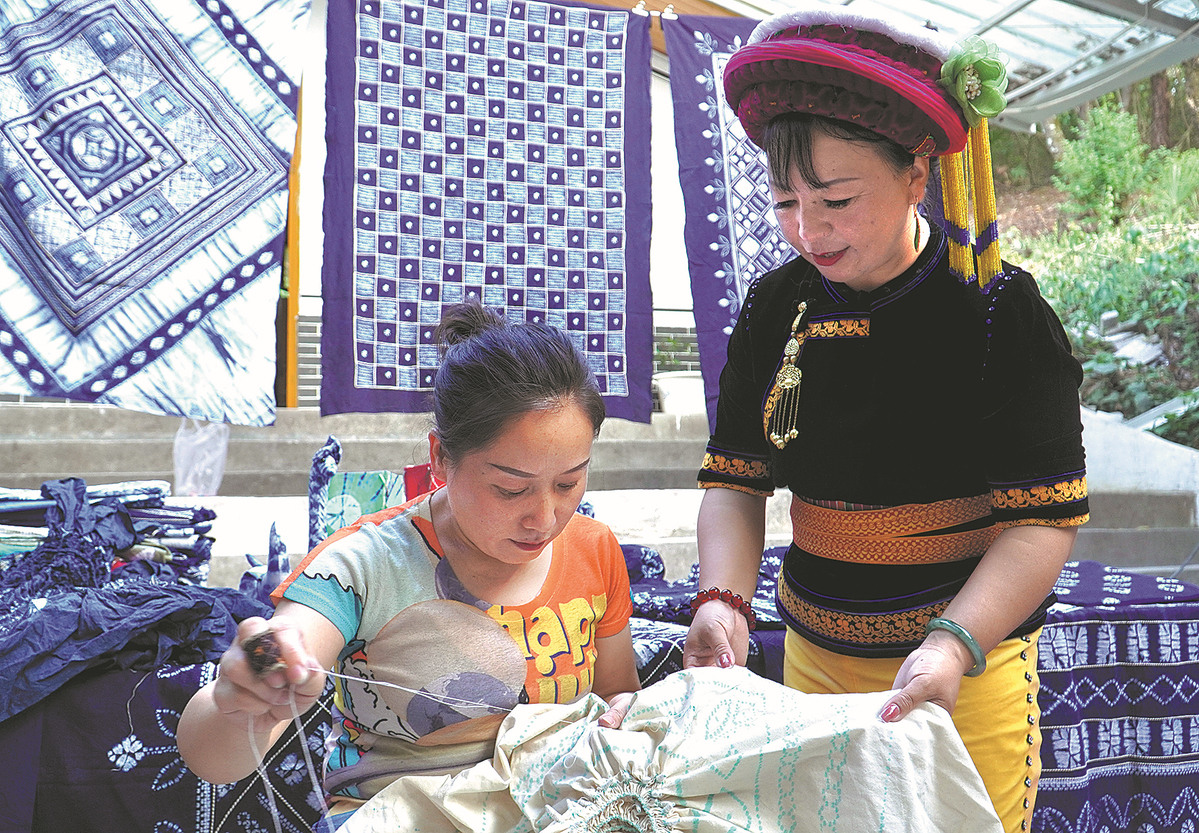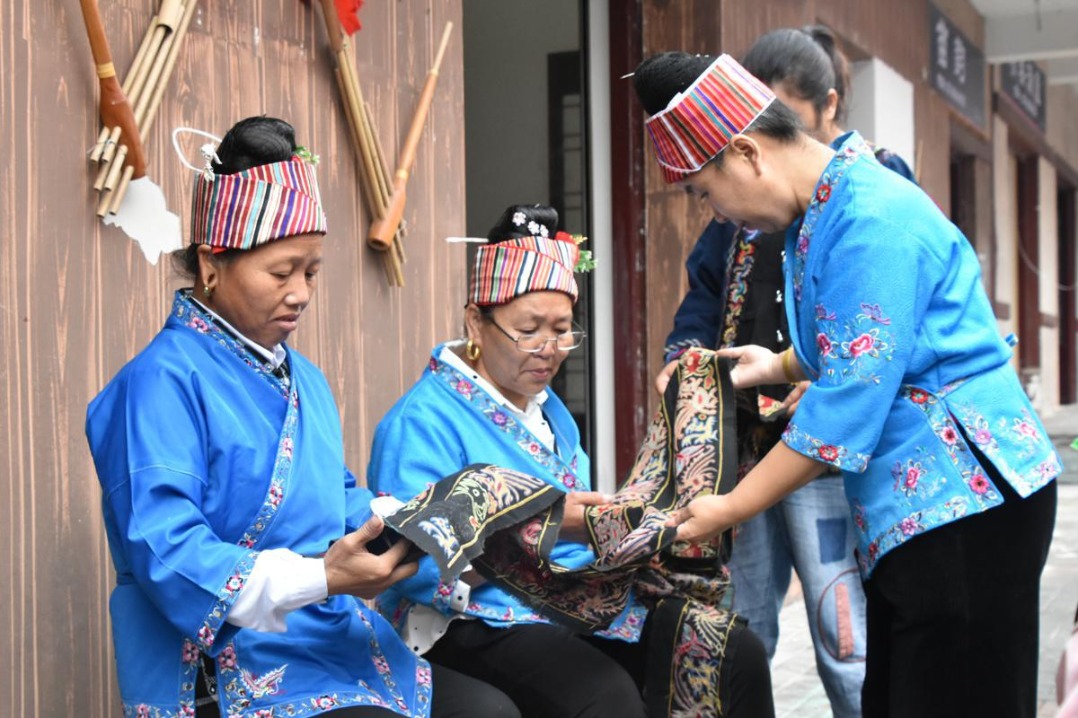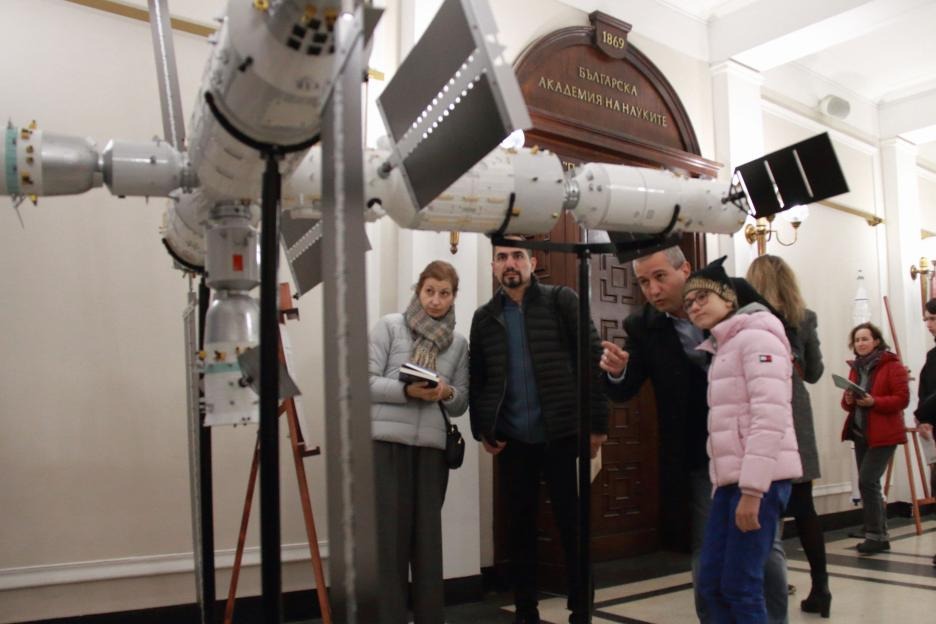From music to tie-dye, it's all about the Bai


CHANGSHA — Crowds gathered around Zhang Pihe, watching the way the Bai woman deftly folded and rolled the fabric and then stitched the design, an important step in the traditional tie-dyeing technique practiced by the Chinese ethnic group.
Hequn village in Sangzhi county, Hunan province, has been attracting many tourists of late with its rich cultural traditions.
But Zhang, who was offering visitors an introduction to Bai culture, is not native to the village. Her home is over 1,000 kilometers away in Dali prefecture, Yunnan province, which is home to most of the country's Bai.
Over 700 years ago, a Bai army from Dali came to Hunan and put down roots in Sangzhi. In the 1980s, after a series of visits and studies, authorities recognized that the Bai of Sangzhi and those living in Dali had the same origins.
However, Sangzhi was an impoverished county, and the residents of Hequn village were too poverty-stricken and too busy earning livings as migrant workers to have time to learn their culture. Bai dance, for example, has more than 80 movements and was on the verge of being lost in Sangzhi.
Having been brought up in and deeply influenced by her culture, Zhang has studied music, dance, tie-dyeing and other aspects of traditional Bai culture.
"We are all from Bai villages, so I hope we can work together to pass down and promote our culture," she said. It was with this conviction in mind that she left her home in Yunnan to move to Sangzhi.
"I aim to take advantage of traditional culture to boost the development of our villages," she added.
As soon as Zhang arrived in Hequn, she set up a tie-dyeing room, purchased needles, thread, cotton cloth, brushes and other tools from Yunnan, and began training villagers in tie-dyeing techniques. She also began to teach music — starting with the Bai-styled octagonal drum — and lectured local women on the heritage of Bai music and dance, teaching them every syllable and movement.
As a cultural adviser on the cultural projects, Zhang has developed a cultural heritage curriculum with the village committee.
One young Hequn girl, Wang Yan, said that the more she learns about Bai culture, the more she has come to love it.
"Ms Zhang teaches us music, dance, tea art and handicrafts. As a Bai, I will make sure these skills are passed down," she said. "Nowadays, Bai culture is becoming stronger and stronger, and I have more confidence that we will pass it on."
Zhong Baiyu, Hequn's Party secretary, said now that more people are returning to their homes, Bai culture has become a form of soft power, helping to vitalize traditional villages.
"Cultural heritage should not be destroyed," Zhong said.
Xinhua
- Ryukyu's historical tributary ties with China highlighted
- Employee sorry for leaking pop star's rehearsal clips
- Shanghai ready for 2025 version of E-sports Masters
- New 'eco-police' system to be set up by 2027
- Hebei cooperative's cabbage proving a hit across China
- Kunming rail accident spurs safety overhaul nationwide





































